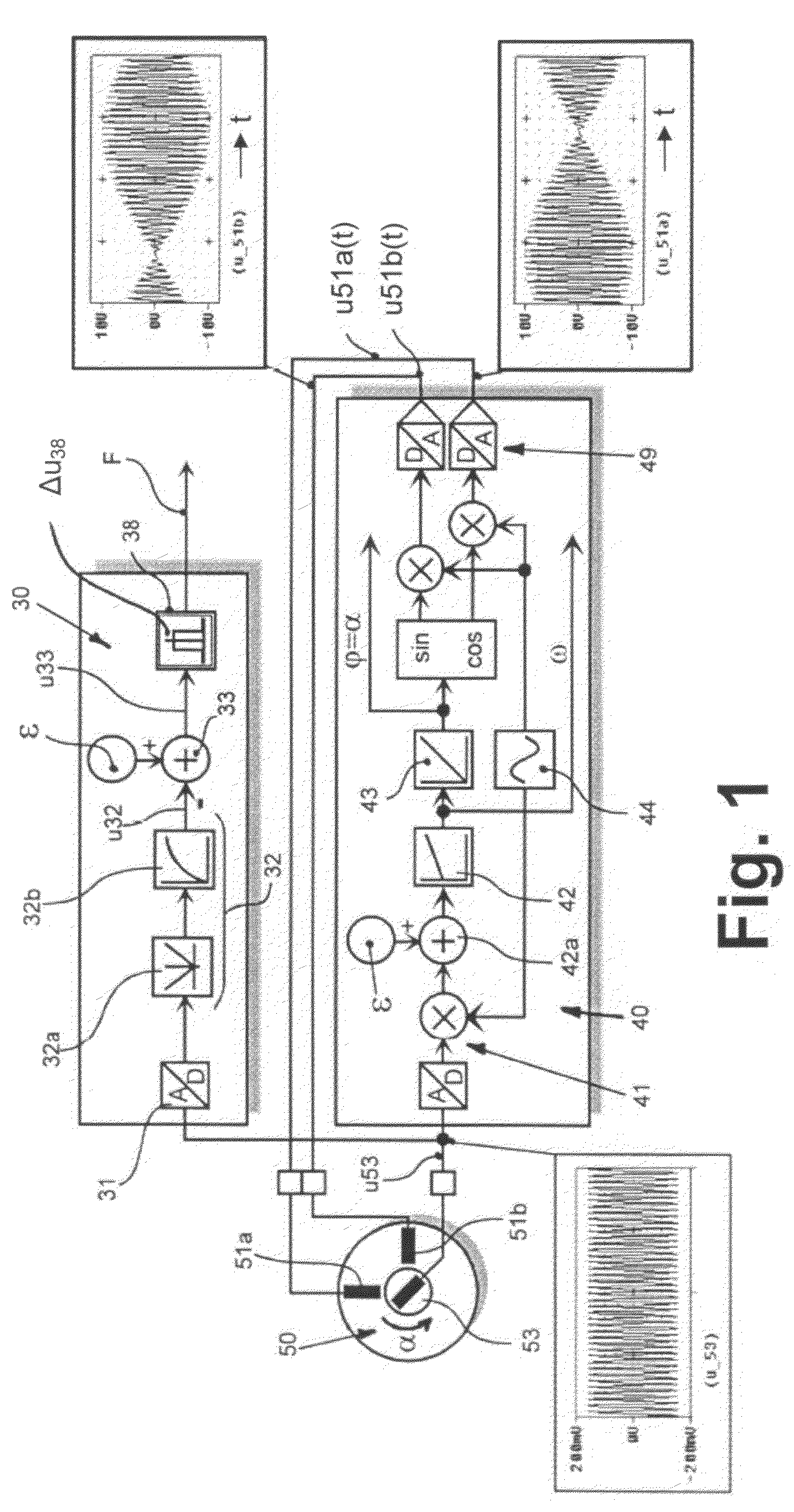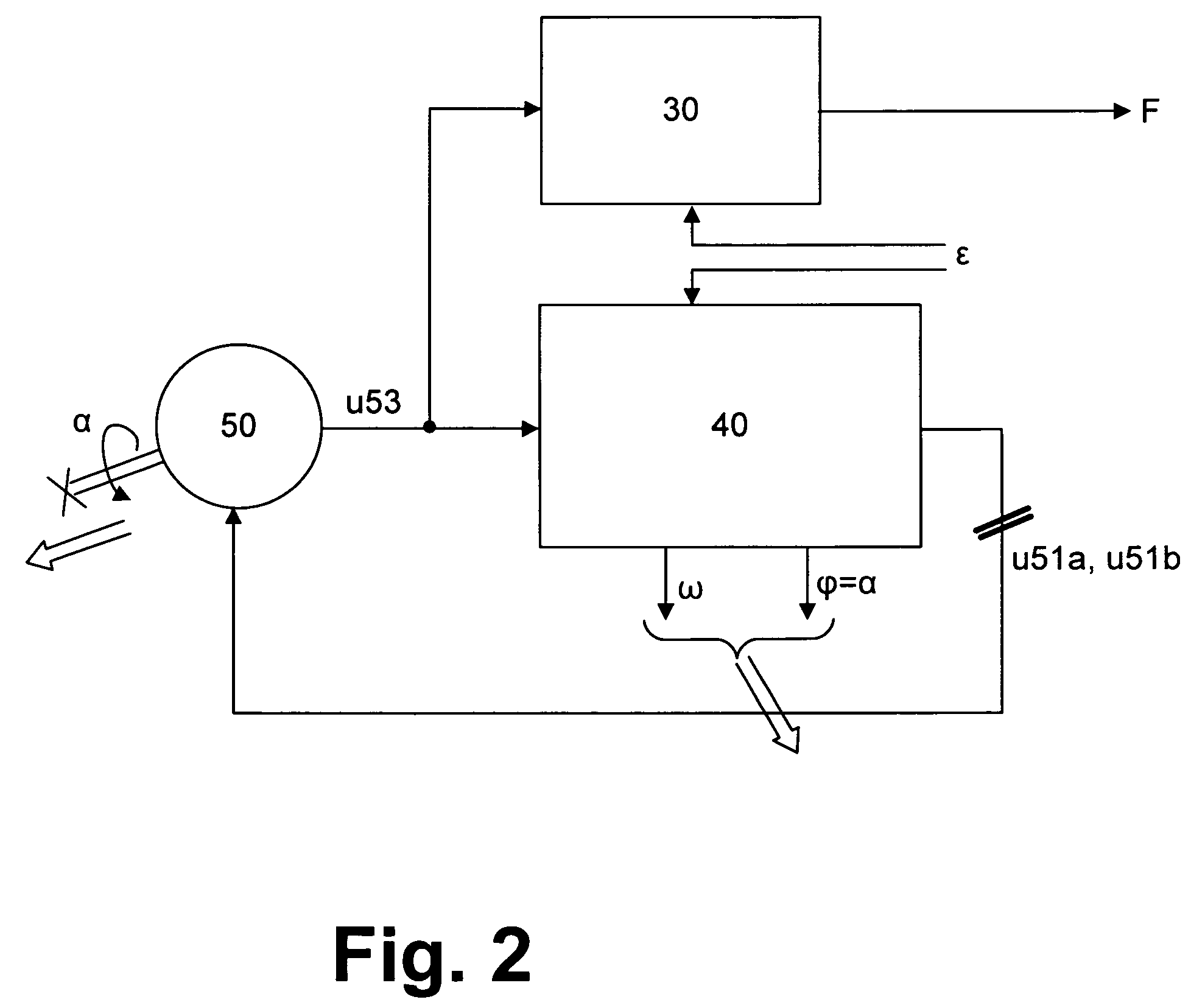Non-redundant safety monitoring for an electric drive mechanism (with a sensor)
a technology of safety monitoring and drive mechanism, applied in the direction of safety arrangements, electrical testing, instruments, etc., to achieve the effect of avoiding assembly expenditure, reducing costs, and saving further redundant transducers
- Summary
- Abstract
- Description
- Claims
- Application Information
AI Technical Summary
Benefits of technology
Problems solved by technology
Method used
Image
Examples
Embodiment Construction
[0030]The following description is intended to convey a thorough understanding of the embodiments described by providing a number of specific embodiments and details involving non-redundant safety monitoring of a sensor for an electric drive. It should be appreciated, however, that the present invention is not limited to these specific embodiments and details, which are exemplary only. It is further understood that one possessing ordinary skill in the art, in light of known systems and methods, would appreciate the use of the invention for its intended purposes and benefits in any number of alternative embodiments, depending on specific design and other needs.
[0031]FIG. 2 illustrates a schematic overview of the functional units of the safety monitoring device described here. A synchro resolver (resolver) 50 is used as a sensor, which is coupled to the shaft of the drive. The synchro resolver comprises transformer-coupled windings, one of which co-rotates with the shaft, whereas the ...
PUM
 Login to View More
Login to View More Abstract
Description
Claims
Application Information
 Login to View More
Login to View More - R&D
- Intellectual Property
- Life Sciences
- Materials
- Tech Scout
- Unparalleled Data Quality
- Higher Quality Content
- 60% Fewer Hallucinations
Browse by: Latest US Patents, China's latest patents, Technical Efficacy Thesaurus, Application Domain, Technology Topic, Popular Technical Reports.
© 2025 PatSnap. All rights reserved.Legal|Privacy policy|Modern Slavery Act Transparency Statement|Sitemap|About US| Contact US: help@patsnap.com



